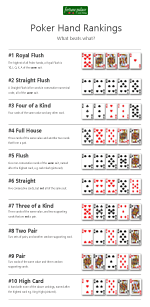
Bluffing is an important skill in Poker, and especially in No Limit Texas Hold’em. You will soon find that by playing extremely ‘tight’ (only betting with strong hands), your opponents will stop calling your bets and raises. What’s more, knowing how to bluff can significantly increase your win rate, if you time them carefully.
What is a bluff?
Any time that you bet, hoping your opponents will fold, this is termed a bluff. In essence a bluff is an attempt to win a pot that it is unlikely you will win at showdown.
Pure bluffing and semi bluffing
A pure bluff in Poker occurs when a player bets or raises with an inferior hand which has little or no chance of improving. If you had 4-5 on a board of A-A-10-8 then this would be a pure bluff – no cards can significantly improve your hand and no opponent will call with a worse hand.
A much more common strategy is the semi bluff; when players bet with draws which can improve to strong hands. This gives a player two ways to win the hand – either their opponents all fold or a later card improves his hand to a straight or a flush.
Bluffing and pot odds
The success of a bluff depends largely on two factors, the size of your bet in relation to the pot and the probability that your opponent folds. There is a simple calculation to find out what percentage chance your bluff must have to break even, which is as follows:
Your bet / (Current Pot + Your Bet)
Suppose you were considering making a $100 bluff bet into a $200 pot. The required success rate would be $100 / ($100 + $100) = 0.5 or 50%.
This means that if, in the above situation, if the opponent folded over 50% of the time the bluff would be profitable, if he folds less than 50% of the time then it is a losing play – it will cost money in the long run.
Which players to bluff
Of course it may be easy to know the theory of how often your bluff must work, but much more difficult to gauge the real life probability of success.
In order to bluff successfully you must successfully gauge the playing style and tendencies of your opponents. Loose, passive players who play many hands and rarely fold are the worst opponents to bluff; they will rarely consider the strength that your bet implies and often call regardless. Tighter players, who are more inclined to fold and only play better hands, are better candidates for a well-timed bluff.
What beats what in Poker?
Ever forget whether a Straight beats a Full House? It can happen to the best of us in the heat of a game.
We’ve put together a printable Poker Hand Rankings chart that you can download and print at your leisure!


